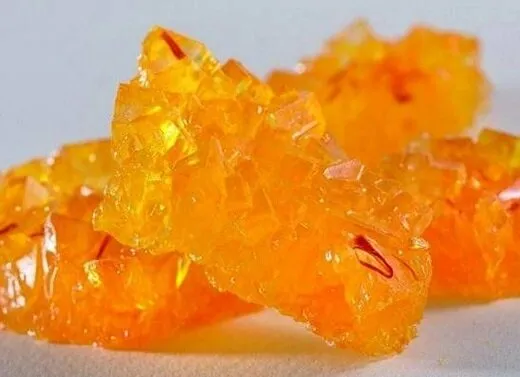Edible String Produced for Nabat (Sugar Crystals)

"In the process of producing saffron-coloured sugar crystals, adding saffron to sugary boiling water and exposing it to heat can reduce the quality of its saffron metabolites," Ebrahim Fouladi, the chief executive of the project to produce edible string for Nabat said.
“When people are consuming saffron Nabat crystals, the remaining cotton or wool string is not a welcome thing. We found out that use of edible saffron string can be considered as a solution to that problem. With this method, by protecting the compounds of saffron in the high temperatures of Nabat production, a healthy and economical and desired product can be produced.”
Fouladi said that this industry needs the government’s support to increase the investment of the private sector, adding that investing in Nabat industry can create a lot of jobs and income for the country in the international markets.
"In addition to Carboxymethylcellulose, protein and saffron extract were also used in this product, which is edible while it also creates a suitable physical structure to withstand high temperature and viscosity conditions. It can also be used in the preparation of other food products as well," he added.
“This knowledge-based product has attracted attention of the private sector, and the industrial production of this new product requires only minor changes in the Nabat-making equipment,” Fouladi continued.
According to the public relations department of the Research Center of Food Sciences and Industries, Qadir Rajabzadeh, the chairman of the center, said, “ Nabat is a prominent product of Iran's confectionery industry, which has been produced in Iran for a long time. Iran acts like a bridge that links Europe, Asia and America in producing Nabat in different forms.”
“Meanwhile, consumption of saffron Nabat has been more welcomed in the world, but recently its production and consumption is facing problems and challenges," he concluded.
4155/i/Mohammad Jafari





















